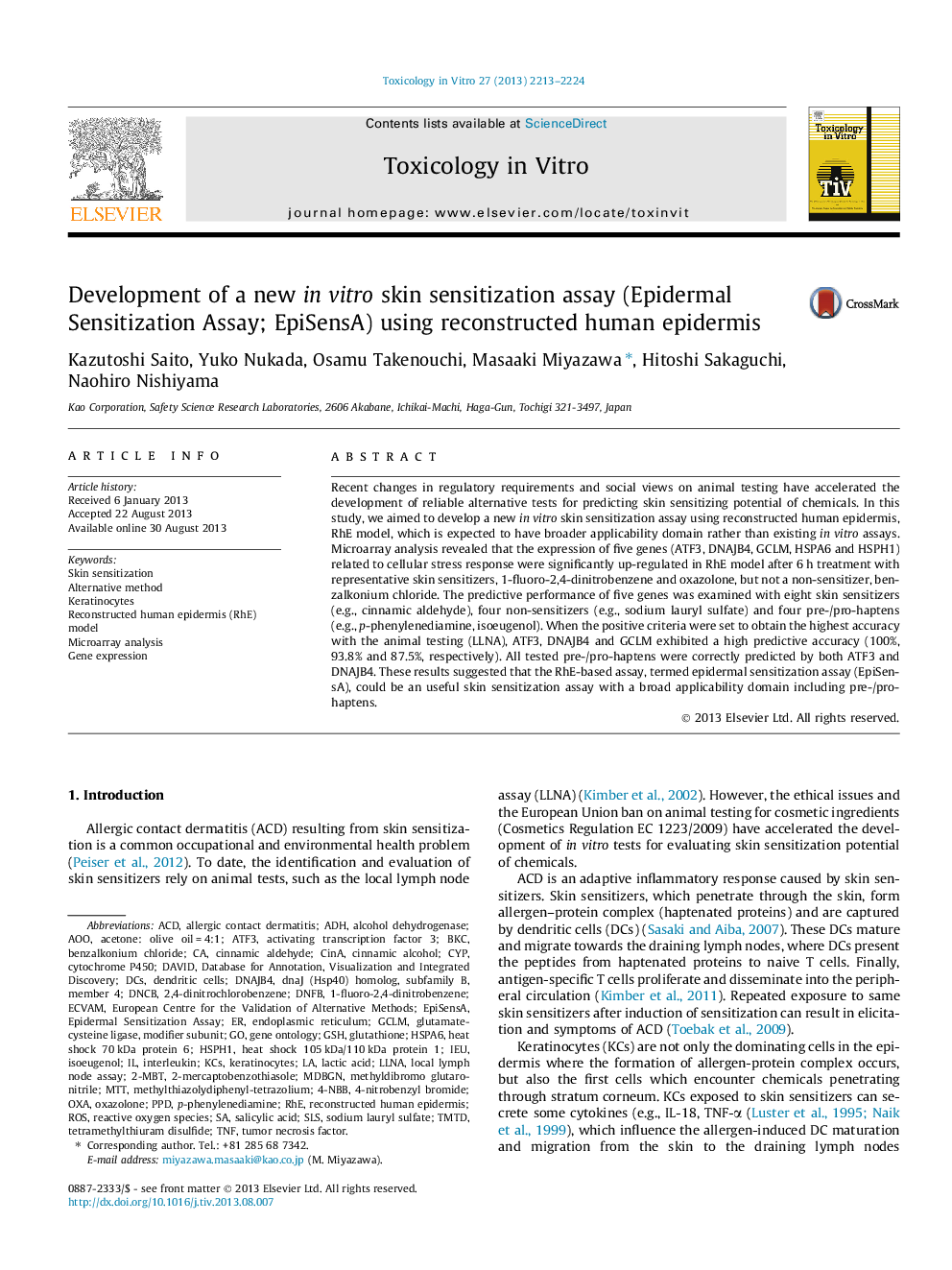| Article ID | Journal | Published Year | Pages | File Type |
|---|---|---|---|---|
| 2602536 | Toxicology in Vitro | 2013 | 12 Pages |
•Gene expression profile was examined in RhE model.•Five cellular stress related genes were significantly upregulated by DNFB and OXA.•Predictive performance of ATF3 gene displayed 100% accuracy to animal testing.•Tested four pre-/pro-haptens were correctly predicted by ATF3 and DNAJB4 genes.•A RhE-based assay could detect skin sensitizing potential of chemicals.
Recent changes in regulatory requirements and social views on animal testing have accelerated the development of reliable alternative tests for predicting skin sensitizing potential of chemicals. In this study, we aimed to develop a new in vitro skin sensitization assay using reconstructed human epidermis, RhE model, which is expected to have broader applicability domain rather than existing in vitro assays. Microarray analysis revealed that the expression of five genes (ATF3, DNAJB4, GCLM, HSPA6 and HSPH1) related to cellular stress response were significantly up-regulated in RhE model after 6 h treatment with representative skin sensitizers, 1-fluoro-2,4-dinitrobenzene and oxazolone, but not a non-sensitizer, benzalkonium chloride. The predictive performance of five genes was examined with eight skin sensitizers (e.g., cinnamic aldehyde), four non-sensitizers (e.g., sodium lauryl sulfate) and four pre-/pro-haptens (e.g., p-phenylenediamine, isoeugenol). When the positive criteria were set to obtain the highest accuracy with the animal testing (LLNA), ATF3, DNAJB4 and GCLM exhibited a high predictive accuracy (100%, 93.8% and 87.5%, respectively). All tested pre-/pro-haptens were correctly predicted by both ATF3 and DNAJB4. These results suggested that the RhE-based assay, termed epidermal sensitization assay (EpiSensA), could be an useful skin sensitization assay with a broad applicability domain including pre-/pro-haptens.
